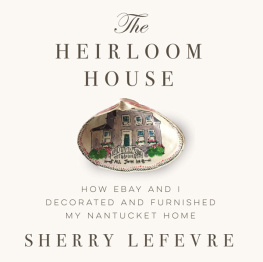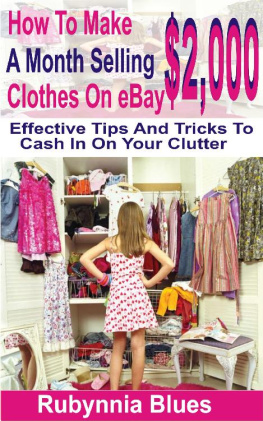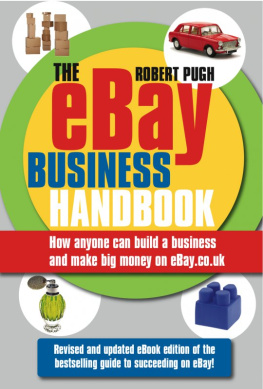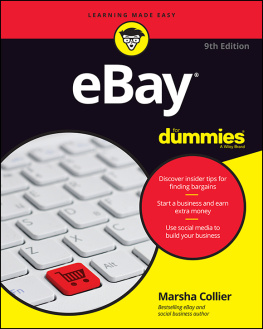Copyright 2015 by Sherry Lefevre
Photographs and illustrations provided by Sherry Lefevre unless otherwise noted.
All rights reserved. No part of this book may be reproduced in any manner without the express written consent of the publisher, except in the case of brief excerpts in critical reviews or articles. All inquiries should be addressed to Skyhorse Publishing, 307 West 36th Street, 11th Floor, New York, NY 10018.
Skyhorse Publishing books may be purchased in bulk at special discounts for sales promotion, corporate gifts, fund-raising, or educational purposes. Special editions can also be created to specifications. For details, contact the Special Sales Department, Skyhorse Publishing, 307 West 36th Street, 11th Floor, New York, NY 10018 or
Skyhorse and Skyhorse Publishing are registered trademarks of
Skyhorse Publishing, Inc., a Delaware corporation.
Visit our website at www.skyhorsepublishing.com.
10 9 8 7 6 5 4 3 2 1
Library of Congress Cataloging-in-Publication Data is available on file.
Cover design by Erin Seaward-Hiatt
Cover photo provided by Sherry Lefevre
Interior design and illustrations by Ryan Penn
Print ISBN: 978-1-63450-233-7
Ebook ISBN: 978-1-5107-0077-2
Printed in China
To my parents
Lil and Tom Lefevre
who, along with everything else,
gave me Nantucket
Thank you to the Nantucket Historic Association and to Laurie Robertson for contributing on-site photographs.
Special thanks to Linda George for her true partnership in bringing this book to light: promoting, proofing, and lovingly prodding me along. Best Friends Forever.
TABLE OF CONTENTS
Introduction

A nineteenth-century cottage.
I always longed to inherit an old wind-battered, wonky-floored summer house, but I didnt. I dreamed of being shepherded into an attic one Sunday afternoon by a spotted, aging aunt, breathless and palsied but eager to reveal the hidden treasures of a checkered past that would soon become my inheritance: snuff boxes, tea caddies, needlepoint samplers, folksy whirligigs, and miniature portraits (on ivory) of rakish great uncles. But I had no aunts, no attics, and no one in my family happened to own anything but a 1960s Rancher.
I grew up in Philadelphias blue-blood suburbsthe Main Linewhere my classmates had grandmothers with cabins in the Adirondacks and the Great Lakes, or oceanfront properties in Northeast Harbor and Prouts Neck, Maine. The calendar read 1963, but my prep school classmates still called boots Wellingtons, raincoats Macintoshes, and record players Victrolas because their summer houses contained these things. Being newcomers from Florida, my family called things what sales people in department stores called them. And they bought whatever version of raincoat was the least expensive (not durable) because in their hometown, St. Petersburg, Florida, people simply died; they didnt live on forever in their heirlooms.
So its highly likely that I developed my coveting impulses from being a child on the margin of inclusion, a child always two or three name brands removed from her peers. Psychologists encourage this kind of self-awareness, and Im happy to oblige, but this book is a testimonial to my own personal credowhich is that you should never take the fun out of being dys fun ctional.
That being the case, I spent my early twenties cluttering my apartments with bits of broken blue-and-white china, threw an old quilt over the seat cushions on my standard-issue, Haitian-cotton sofa, and watched from the sidelines as retail home furnishings caught up with me.
The Archangel of my kindred spirits was Ralph Lauren, of course. When, in 1982, he unveiled his first line of blue-blood home furnishings, leather suitcases and trunks full of camp blankets and herringbone riding jackets, it began to seem possible that anyone could be to-the-manor-born. Moreover, you could pick your bloodline, by region even. Freed from the shackles of a legitimate heritage, you could inherit, by credit card, a hunting lodge in Southwest Utah, complete with Aztec Indian style blankets and deerskin jackets or a shingled house on the coast of Maine complete with walking sticks and needlepoint pillows. But it took a lot of new money to buy the old moneyed look. Which, well, once again I didnt have.
And then, in 2003, I discovered eBay.
eBay was the stairway to the attic of my dreams. eBay made inheritance possible through adoptionof other peoples unwanted inheritance.
Given the yin and yang of the world, why was I surprised to find how many people want to unburden themselves of their great aunts clutter? My fantasy of a room filled with odd mint tins, Victorian needle cases, perfume bottles, family tintypes, scratchy homespun and civil war journals is, it turns out, someone elses nightmare.
Indeed, on reflection, I realized I had a friend for whom Biedermeier furniture is yet another cross she has to bear for being married to a man who inherited it from German grandparents. While I found happy kinship with a family that crated up and shipped out grandfathers ivory inlaid secretary before hitting the ground running from Nazi persecution.

The first thing I ever bought on eBay was, however, not a family heirloom. It was a stuffed gorilla that rocked from side to side, played bongo drums, and sang I dont wanna work, I just wanna bang on the drums all day. My son had been given this slice of heaven for his birthday and I observed the shy envy of his cousin, his smile always a little too taut, as he pressed its on switch over and over again. I wanted to buy him one for Christmas. But I couldnt find it anywhere. Did you try eBay? someone from the twenty-first century suggested. So I opened the site and typed in gorilla bongo drums sings and poof, there he was. For $5 plus shipping. It was like Disney magic. Bibbedy boppedy boo, and my little nephews dream came true.

And then I asked myself the inevitable, fateful eBay Pandoras box of a question: could my own little materialistic dreams come true as well? So I typed in rubber cigar with blowout worm and poof ; then I typed in vintage pinecone elf with lantern and poof ; then I typed in vintage Rushton Zippy monkey and poof .
Initially, the fact that I was no longer eleven didnt occur to me. Thinking of my nephew, I was in a rush to fulfill all the painfully pent-up longings of my disadvantaged (because denied something) childhood. Two Christmases in a row I had asked for Zippy the rubber-faced chimpanzee doll. The cool cigar with blow-out worm had broken within minutes of its life with me. These wounds must have been throbbing just below the surface of my fortitude because at the mere hint of a salve, they had come screaming through my synapses, channeling down into my racing fingertips.
Moreover, the purveyors of this eBay magic knew precisely what they were doing because there, in front of me, under a gelatinous smiling Zip, complete with overalls and beanie, were these words:
Ive been listing my entire lifetime Zippy monkey collection, wanting to make sure they all go to the right people... people who had one as a child, who lost him and want him back, or people who were never lucky enough to have one.















